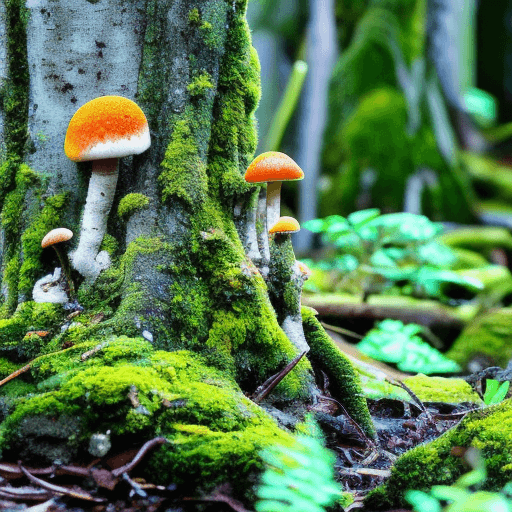Moss is a plant that grows in moist environments.
It is often found in forests, on the sides of trees and rocks, and near streams and ponds.
In this blog post, we will discuss if is moss a fungus and the differences between mosses and fungi, as well as their similarities.
No, but in some ways, moss could be considered a type of fungus due to its dependence upon certain types of fungi within its lifecycle.

Explain it to a child
Moss is still classified as a Non-Vascular Plant, not a Fungus because they have different structures and metabolisms.
Is moss a fungus?
No, moss is not a fungus.
- Moss is a type of plant that does not have any flowers, seeds, or tree roots.
- Mosses are found in damp places all over the world.
- Most mosses grow close to the ground in wet areas.
- Some types of moss can live on walls or trees.
What is moss?

Moss is an interesting organism found throughout the world in a variety of environmental conditions.
It covers rocks, logs, and tree trunks, providing soft green hues in forests or along streams.
Mosses are small, non-vascular plants that lack roots and rely on water for survival.
The most important part of moss is the rhizoid structure – a root-like filament that guides water from the ground to its stem and eventually to the sporophyte (the reproductive elements).
Though slow growing, moss reproduces quickly with just a moist environment and some access to light.
What’s even more amazing is that it can survive through extreme temperatures or at high altitudes without the need for soil!
Moss may be small, but it offers fascinating insights into nature’s diversity and beauty.
What is a fungus?

A fungus is a type of microorganism that lives in the soil, on plants, and in water.
They are a source of food for many animals and play an important role in the decomposition of organic matter.
Some fungi are edible, while others can cause disease.
Moss and fungi are two organisms that are closely related in more ways than one.
Most people assume that because these two organisms both thrive in wet and shaded environments, they must be closely related.

While this is true, their relationship is actually much deeper than first assumed.
Both moss and fungi share a unique bond in that they share similar internal structures and processes, adding to the complexity of their relationship.
Scientists have also determined that many species of both moss and fungi contain compounds that allow them to form mutually beneficial partnerships, further cementing the long-standing bond between these two organisms.
It’s remarkable to think that moss and fungi have been intertwined for years, providing an example of why biological relationships can run even deeper than initially perceived.
What is the difference between fungus and moss?

There are several key differences between fungus and moss.
- For one, moss is a type of plant, while fungus is not.
- Mosses have chlorophyll and can produce their own food through photosynthesis, while fungi cannot.
- Mosses also have stems and leaves, while fungi do not.
Finally, mosses reproduce by releasing spores, while fungi reproduce by releasing spores or by producing fruiting bodies.
Is moss harmful?
Moss is a plant that does not have flowers or seeds.
- It grows close to the ground in moist and shady areas.
- Many people think moss is Harmful because it can damage buildings and sidewalks.
- However, moss is an important plant for the environment.
It helps prevent soil erosion and provides homes for animals.
Is fungus harmful?
Fungus is generally considered to be harmless, however, there are instances where certain types can cause illnesses ranging from mildly annoying skin infections to deadly forms of meningitis.
While the majority of fungi exist to help break down decaying matter in our environment and serve as an important part of our ecosystem, it’s important to know what types of fungi are found on our bodies and around us.
Aside from these differences, the two organisms are alike in several ways including being both autotrophic organisms which means they make their own food through photosynthesis using carbon dioxide and sunlight as energy sources.
Both plants also need water to survive since it can help support metabolic functions such as spore production needed for reproduction so that new generations can form without a host organism present, unlike animals that rely on other organisms during different stages of their development process.
Article Sources
Jacks of Science sources the most authoritative, trustworthy, and highly recognized institutions for our article research. Learn more about our Editorial Teams process and diligence in verifying the accuracy of every article we publish.
